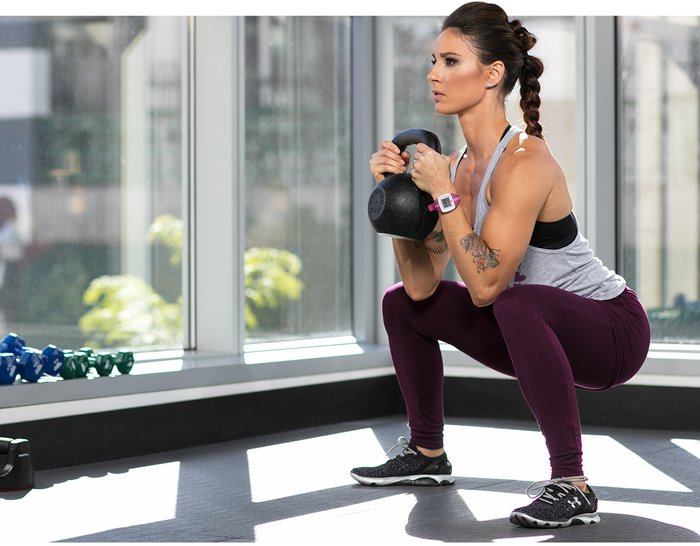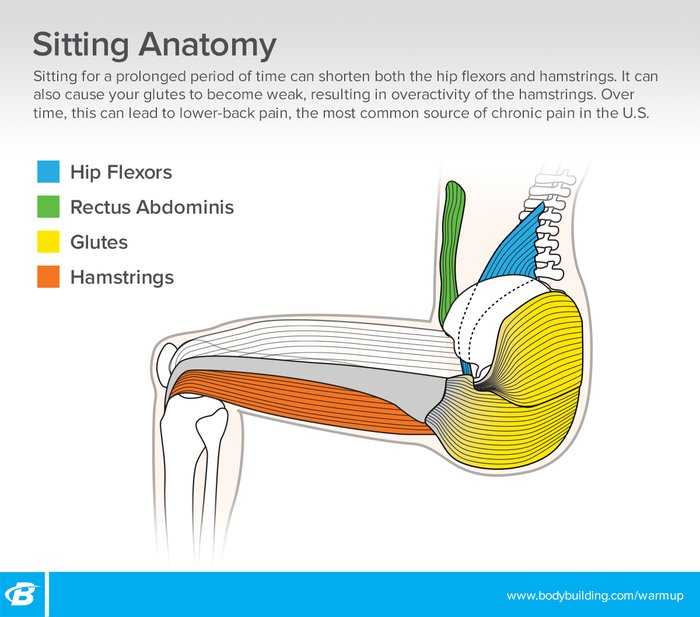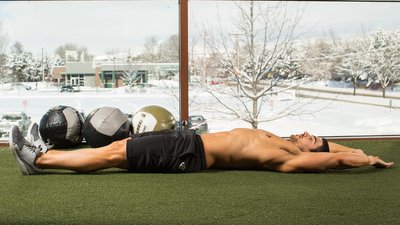You know you shouldn't skip leg day. But skipping your warmup on leg day is even worse. And I hate to break it to you, but sprinting from your car to the gym doors because your pre-workout kicked in doesn't count.
Leg day is more demanding than any other day of the week, because it's really a total-body workout day. So to warm up for it, you need to prepare not just your legs but your entire body. Skip or skimp on the warmup, and you're setting yourself up for injury and poor performance.
The Perfect Lower-Body Warmup
The key to a safe, effective leg day is to dedicate time to exercises that specifically work your core, glutes, and hip flexors. These are the main players that enable you to bend, extend, and stabilize to form a safe and strong base.
This warmup will target each group to help increase blood flow, range of motion, and stability throughout your hips and legs. The result will be a better, safer workout.

After a 5-10-minute general warmup, complete this three-part lower-body warmup:
Part 1
- Upper-body developmental rolling: 1 set of 3-5 reps (both directions)
- Lower-body developmental rolling: 1 set of 3-5 reps (both directions)
- Hip rocking: 1 set of 10-15 reps
- Baby crawl: 1 set of 60 seconds
- Bear crawl: 1 set of 60 seconds
Part 2
Do three rounds of the following:
- Half-kneeling tailbone tuck: 1 set of 10-12 reps per side
- Goblet squats (with a focus on hip extension): 1 set of 8-10 reps
Part 3
Whatever lifts you start your workout with (squat, deadlift, lunge), begin with:
- 1 set of 8-12 reps at 60 percent of working weight
- 1 set of 8-12 reps at 70 percent of working weight
- 1 set of 5-8 reps at 80 percent of working weight
What Warming Up Gets You
Engage Your Natural Lifting Belt
Your core is your natural, built-in weight belt. Similar to a real belt, the core creates tension around your midsection and keeps your spine safe. Unlike a lifting belt, though, your core needs to be "turned on" to work properly.
When your core is underactive, you put a lot of strain on your spine—particularly during compound movements such as the squat or deadlift. Hitting core stabilization during your warmup turns on your core, cinching up your built-in "belt" and preparing you to safely and effectively handle heavy loads.
Relax Hip Flexors to Engage Glutes
If you work a typical 9-to-5 behind a desk, you probably have tight hip flexors. That's because sitting for most of the day keeps your flexors tight. This has a ripple effect that impairs glute function, because flexors and glutes are antagonist muscle groups—one flexes the hip, the other extends it.
When your flexors are stretched, your glutes are contracted, and when your flexors are overly tight, your glutes are usually underactive. Relaxed hip flexors enable better glute activation, which is one of the major goals of your lower body warmup.

By doing warmup stretches that release tight hip flexors, you'll help correct anterior-pelvic tilt that can lead to low-back pain during lower-body lifts. And you'll improve your hip mobility, squat mechanics, and deadlift technique.
When your flexors are too tight, it's harder to exert force through the entire range of motion, making it harder for your hips to function properly. This lack of mobility can lead to a breakdown in form on big exercises like squats, deadlifts, and any of their variations.
Energize Your Glute Powerhouse
As a fitness professional, I have no qualms admitting I love gluteal development. And I'm not just talking about looking great in a pair of jeans. I mean building glutes strong enough to serve as your body's powerhouse, enabling you to perform at your best.
Activating your glutes before lifting is so important because most people have grossly underactive glutes. When your glutes don't fire properly, you don't perform optimally: It's that simple.
Glute activation during your warmup will help to loosen your hips and make sure that all systems are go when it's time to move heavy weight.

